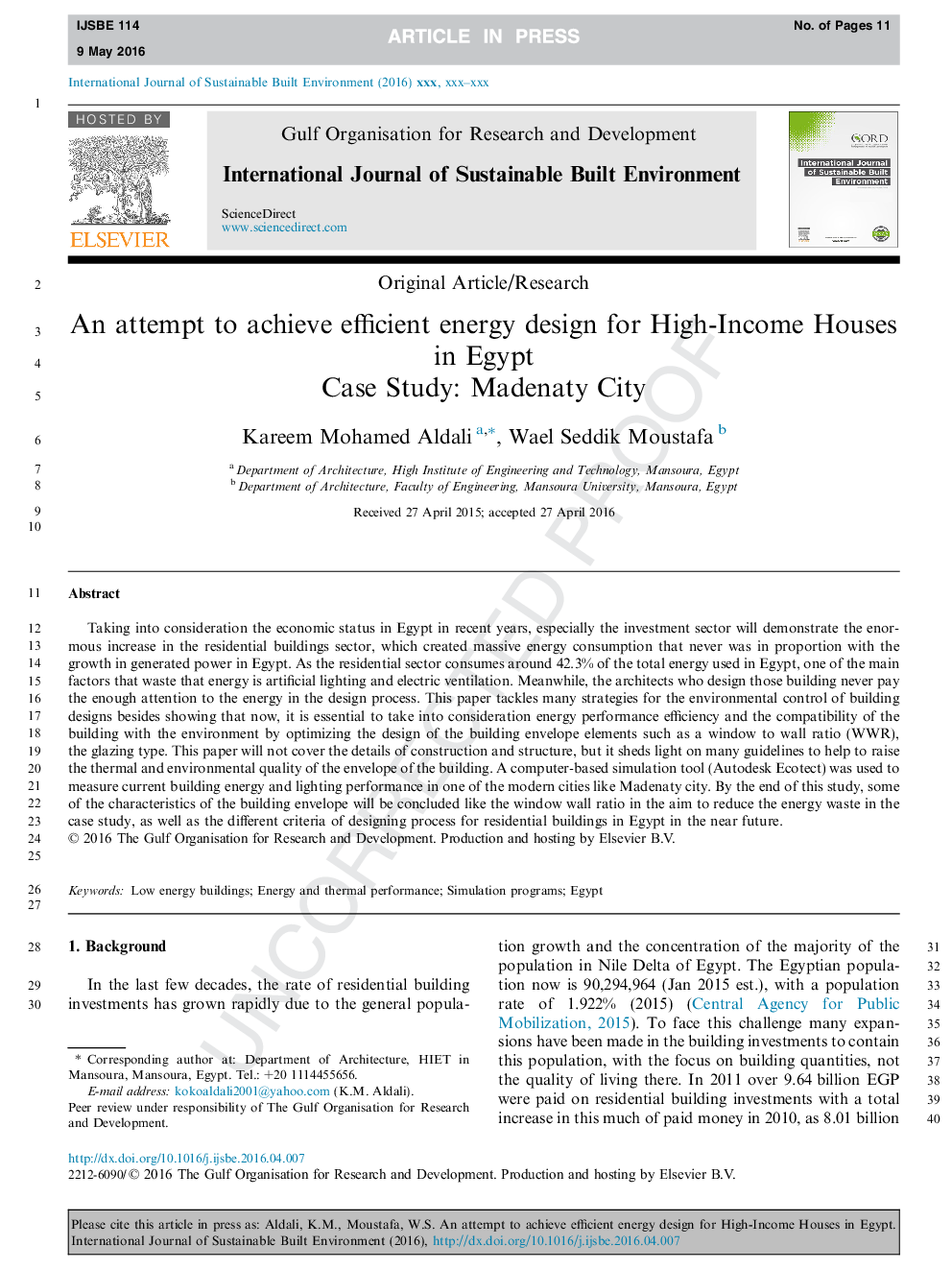| Article ID | Journal | Published Year | Pages | File Type |
|---|---|---|---|---|
| 6659559 | International Journal of Sustainable Built Environment | 2016 | 11 Pages |
Abstract
Taking into consideration the economic status in Egypt in recent years, especially the investment sector will demonstrate the enormous increase in the residential buildings sector, which created massive energy consumption that never was in proportion with the growth in generated power in Egypt. As the residential sector consumes around 42.3% of the total energy used in Egypt, one of the main factors that waste that energy is artificial lighting and electric ventilation. Meanwhile, the architects who design those building never pay the enough attention to the energy in the design process. This paper tackles many strategies for the environmental control of building designs besides showing that now, it is essential to take into consideration energy performance efficiency and the compatibility of the building with the environment by optimizing the design of the building envelope elements such as a window to wall ratio (WWR), the glazing type. This paper will not cover the details of construction and structure, but it sheds light on many guidelines to help to raise the thermal and environmental quality of the envelope of the building. A computer-based simulation tool (Autodesk Ecotect) was used to measure current building energy and lighting performance in one of the modern cities like Madenaty city. By the end of this study, some of the characteristics of the building envelope will be concluded like the window wall ratio in the aim to reduce the energy waste in the case study, as well as the different criteria of designing process for residential buildings in Egypt in the near future.
Related Topics
Physical Sciences and Engineering
Chemical Engineering
Chemical Engineering (General)
Authors
Kareem Mohamed Aldali, Wael Seddik Moustafa,
